TABLE 14-16
What are the factors that determine the acceleration time (in sec.) from 0 to 60 miles per hour of a car? Data on the following variables for 171 different vehicle models were collected:
Accel Time: Acceleration time in sec.
Cargo Vol: Cargo volume in cu. ft.
HP: Horsepower
MPG: Miles per gallon
SUV: 1 if the vehicle model is an SUV with Coupe as the base when SUV and Sedan are both 0
Sedan: 1 if the vehicle model is a sedan with Coupe as the base when SUV and Sedan are both 0
The regression results using acceleration time as the dependent variable and the remaining variables as the independent variables are presented below.
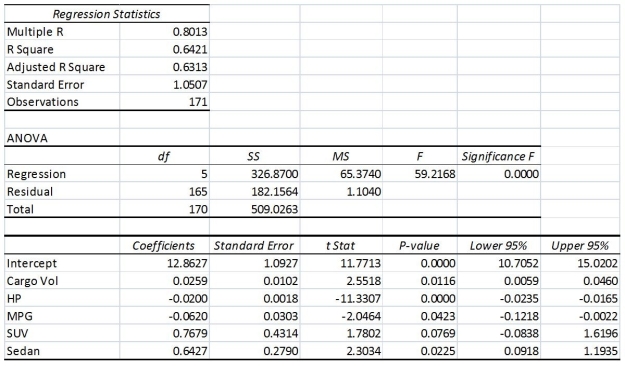
The various residual plots are as shown below.
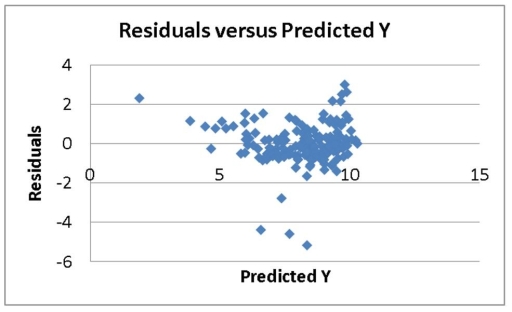
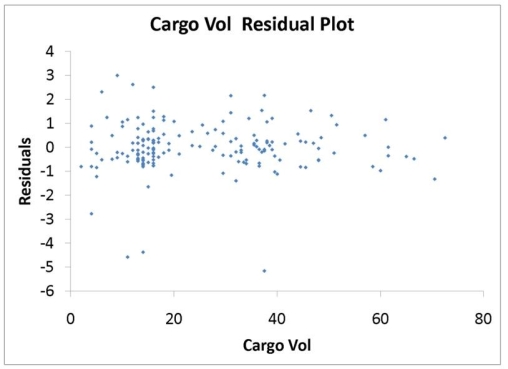
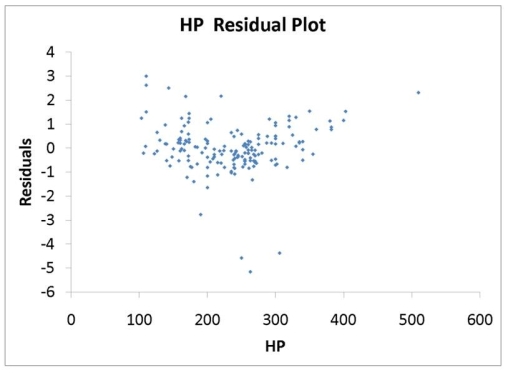
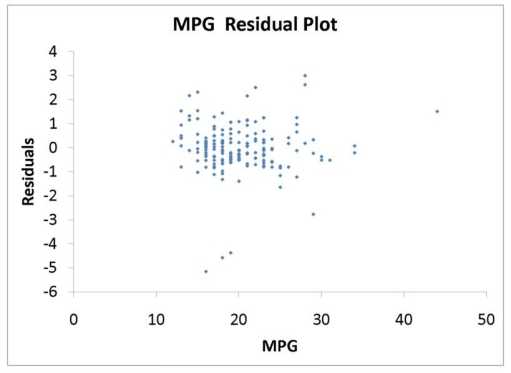
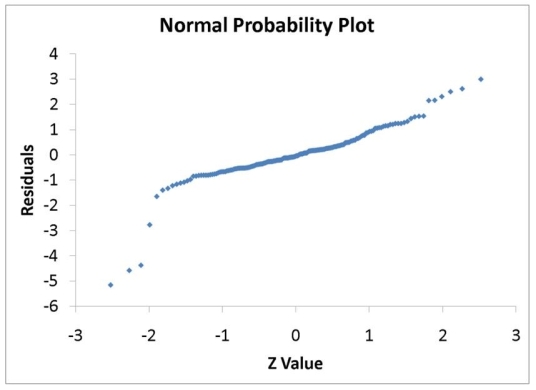

-Referring to 14-16, what is the p-value of the test statistic to determine whether SUV makes a significant contribution to the regression model in the presence of the other independent variables at a 5% level of significance?
Definitions:
Kant's Theory
A philosophical approach developed by Immanuel Kant, emphasizing duty, moral law, and the categorical imperative.
Offenders
Individuals who have committed a violation of the law or a specific offense.
Autonomous Moral Agents
Individuals or entities capable of making their own ethical decisions and bearing responsibility for those decisions.
Justified Individuals
Persons whose actions or beliefs are deemed ethical, legal, or right based on moral or legal grounds.
Q23: Referring to Table 13-10, what are the
Q35: Referring to Table 16-13, what is the
Q75: Data that exhibit an autocorrelation effect violate
Q83: Referring to Table 13-9, the 90% confidence
Q112: Which of the following situations suggests a
Q130: Referring to Table 13-3, the standard error
Q132: Referring to Table 14-7, the department head
Q175: When an additional explanatory variable is introduced
Q195: Referring to Table 14-4, when the builder
Q271: Referring to Table 14-17 Model 1, there